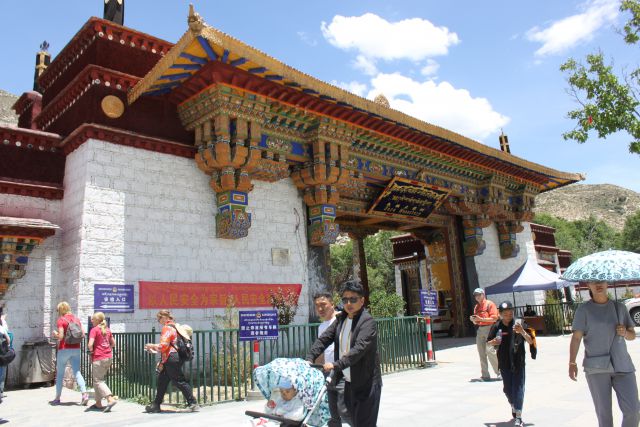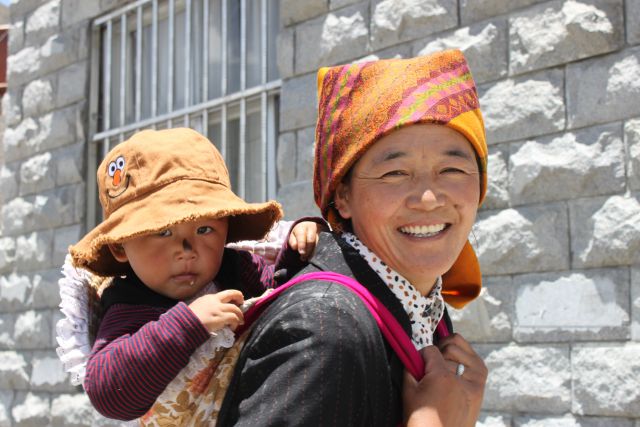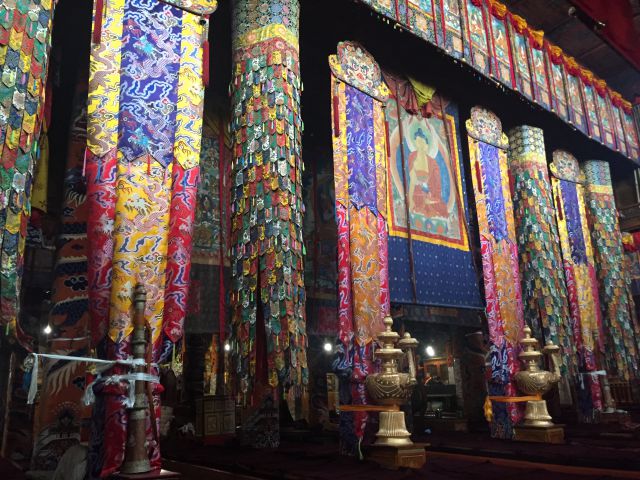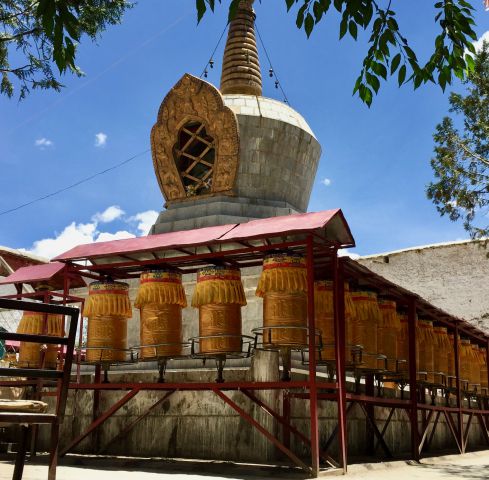Located in the northern suburbs of Lhasa, Sera Monastery is one of the three great schools of Tibetan Buddhism dedicated to the Gelugpa, Yellow Hat Sect. Its name 'sera' derives from a Tibetan word for the wild roses that were blooming on the hillsides when the monastery was built. The complex is large, covering 28 acres and prior to 1959 was home to over 5,000 monks. Sera had been home to three colleges, each one with their own temple. Sera Me and Sera Je colleges focused on the fundamental precepts of Buddhism while the third college Ngaka was dedicated to tantric teachings. Sadly today, the number of monks at Sera Monastery is in the hundreds and the Ngaka school no longer exists.
The wild roses had long since bloomed on the hot and sunny day we visited. Knowing the damage done to the monastery and tragic loss of life as a result of the Chinese invasion and subsequent Cultural Revolution, I was interested to see what Sera looked like today and gain a sense of the spiritual activity there. When we arrived it was apparent that much had been physically restored and refurbished. Outside the monastery there were nicely paved sidewalks with parking areas for cars and buses. As we walked up to the entrance, I had a feeling of being on a 'boardwalk' (minus the ocean of course and probably due to the excessive heat) as there were numerous vendors lined up selling all sorts of food, hats and clothing, jewelry, and trinkets for children . . . a bit touristy. Once we entered through the colorful entryway though, the outside world was gone.
The first thing we passed was a row of brightly polished prayer wheels that surrounded a large stupa on two sides. We then made our way to the Great (Coqen) Assembly Hall, a gathering place for all the monks which was used for various rituals. The Great Hall with its many chapels as well as the other temples, is a delightful overload for the senses! The gold, brass, and jewel studded statues; the colorful silks, paintings and stunning Thangkas; the scent of incense and yak butter candles are something one must personally experience because it is simply too difficult to explain in words.
The highlight of our visit was the daily debates that take place in a lovely tree-shaded courtyard. The monks gather between 3 and 5 in the afternoon to quiz one another about Buddhist teachings. These are lively, boisterous gatherings with one monk shouting questions at another. The monk asking the questions slaps his right hand (palm up or down) against his left palm to indicate a correct or incorrect answer. It's very entertaining!
I'm glad Sera Monastery was the first one we visited on our trip as had it been the last, I think I would have felt a letdown. While I was happy to see the site maintained and active, it is difficult not to compare the experiences we had at other monasteries with that at Sera. As I write this, I do not in any way mean to diminish the faith and dedication of the devout monks at Sera, I simply feel it is now a 'showpiece' and at what cost? The day of our visit it appeared there were more tourists there than devotees practicing their faith while other monasteries we visited were bustling with people prostrating themselves and walking the kora. It saddens me to think of what Sera 'once was' and what it 'is now.'
With all sincerity, 'Happy 600th Birthday' in 2019 Sera Monastery . . . may the wild roses keep blooming and the faithful embrace your teachings!
Study Tour








